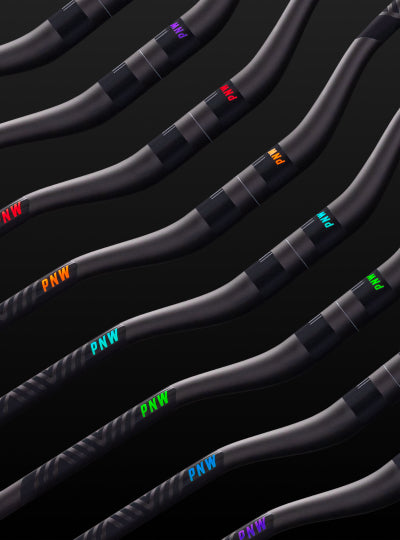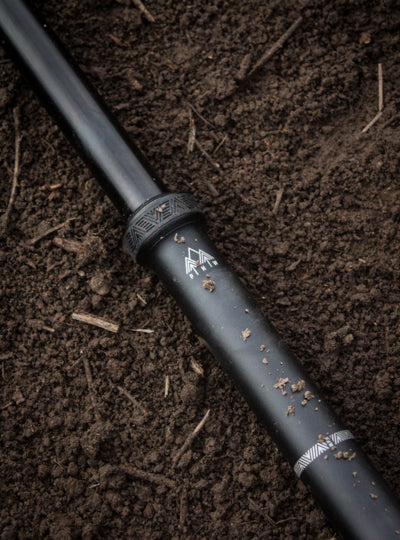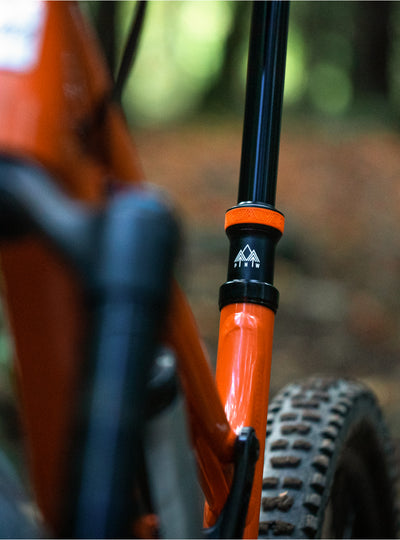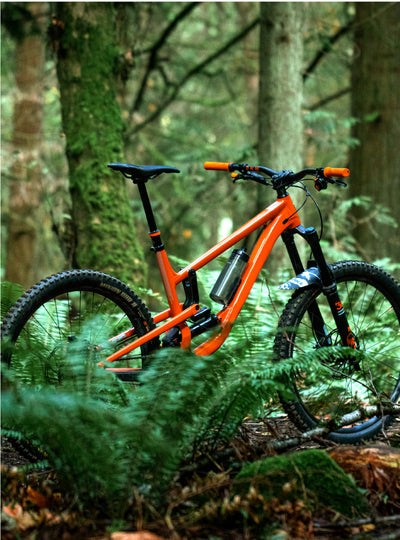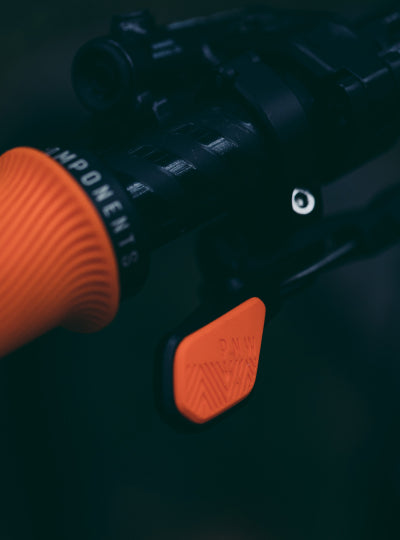CARBON VS ALUMINUM HANDLEBARS - WHICH BARS ARE RIGHT FOR YOU?
One of the most common questions we’ve been asked now that the Loam Carbon Bar has entered the chat is: What’s better? Aluminum or Carbon Bars? This is a hotly debated topic and for those of you thinking it can’t get any better than the Range Bar, we’re here to sprinkle some knowledge, experience, and of course personal opinions on the matter. Because aluminum and carbon bars can vary widely across the spectrum of comfort, durability, and cost, our pros and cons are based specifically on the features of the Range Alloy Handlebar and the Loam Carbon Bar. There’s a time and a place for both of our rad handlebars, so let’s get down to it.
CARBON - PROS AND CONS
+ Comfort One of the most magical features of a carbon bar, if it is well-made and well-tuned, is that carbon can provide superior chatter-damping characteristics over aluminum. This is not true for all carbon handlebars, but when comparing the PNW Range Bar to the PNW Loam Carbon Bar, our deflection testing has shown this to be true for the Loam Carbon Bar.
+ Tuneable Compliance By using unidirectional sheets of carbon fiber, there’s a very unique level of control over the flexibility of a carbon handlebar. Variable wall thicknesses can be built up to make the bar stiffer in certain areas and more flexible in others, offering a finer-tuned ride feel.
+ Lightweight The Loam Carbon Bar weighs in at 233g while the Range Alloy Handlebar is 310g.
- Cost Carbon is Gucci. We’re laying it sheet by sheet and baking it fresh on the factory floor, the material and the process are just a bit more expensive than manufacturing an alloy handlebar.
- Durability Though the Loam Carbon Bar has surpassed EFBE Category 5 testing for both DH riding and E-MTB, carbon is just not quite as durable as alloy. If carbon gets scraped/damaged/cracked on the surface the material can become very delicate and fail. A fail on a crash with a carbon bar can be catastrophic, whereas with an alloy bar the bar will most often bend instead of break. If you crash on a carbon bar, the bar needs to be inspected carefully for any flaws to ensure it’s still safe for use.
ALUMINUM - PROS AND CONS
+ Beefy Durability One of the greatest advantages of an alloy handlebar is its ability to last crash after crash. This makes the Range Bar an excellent choice for someone who is looking to upgrade the comfort of their bike, but who also might be riding challenging terrain, learning new skills, or simply sending it big over and over.
+ Affordable Comfort The Range Handlebar clocks in at $69 - whereas the Loam Carbon bar is $149 (MSRP USD).
- Added Weight The Range Alloy Handlebar weighs in at 310g while the Loam Carbon Bar is a slim 233g.
- Not as Tuneable With Alloy we cannot “tune” the material to have particular characteristics like we can with carbon fiber, so an aluminum handlebar will always feel stiffer and harsher than many carbon bars. Based on deflection data this is true for our Range Handlebar when compared to the Loam Carbon Bar.
WHEN SHOULD I RIDE AN ALUMINUM OR A CARBON HANDLEBAR?
Your choice of handlebar is going to depend on many factors, including your bike, riding style, skill level, the intended purpose, and just general preference. Here’s some advice from the PNW Crew on when they’d choose carbon over alloy and vice versa.
"For my bikes that are lighter builds, and/or shorter travel (29er and enduro bikes) I would choose carbon. On bikes where I want a more "solid" feel. The DH bike, the big suspension smooths out the ride and it seems less risky to run alloy for the gnarly situations I put that bike in. The same goes for the dirt jump bike. The dirt jump bike itself is always taking bails and I don't want to risk striking the carbon the wrong way."
-Mark Matthews @markymath
“I ride both carbon and aluminum bars regularly, partly because of my role here at PNW, but also because I enjoy switching them up sometimes. I’m going to keep this specifically related to our Loam Carbon Bar and aluminum Range Bar. Aside from the cost and weight differences, about 80 grams and $80 dollars, the biggest differences I’ve noticed between the two are related to responsiveness and comfort.
Generally speaking, across several types of riding and terrain types, our Loam Carbon Bar lives on the more comfortable end of the spectrum relative to our aluminum Range Bar. This is based on my personal experience, but we also have quite a bit of deflection data to back this up.
By not absorbing vibrations and deflecting as much as the Loam Carbon Bar, you’ll experience more feedback from your bike while riding the aluminum Range Bar. Some scenarios where this might be preferable would be smoother trail riding, dirt jumping, and even enduro racing if you want a really connected feel.
If you’re riding really rough terrain, long descents or generally pushing your bike really hard, creating a lot of arm pump, I'd recommend leaning into the chatter-absorption properties of our Loam Carbon Bar. Both options offer great ride-feel, but terrain, riding style and personal preference should ultimately determine which one you choose.”
-TJ Trotter, Product Manager
“If I crashed a lot (dirt jumping, learning new tricks, pushing super hard on technical terrain every ride) I would likely go with an alloy bar. Otherwise, I would prefer the lighter, smoother riding carbon for my normal MTB rides.”
-Aaron Kerson, CEO
“Carbon is bad for cyclocross, haha”
-Anonymous PNW Team Member
A MATERIAL NOTE: WE SAY ALUMINUM BECAUSE YOU SAY ALUMINUM
We’ll often refer to our Range Handlebar as an “aluminum” handlebar because we’ve found that’s what most folks say… or al-u-min-i-um if you’re British. Other times, we’ll aptly label it as an “alloy” handlebar because we’re nerds and we like to be specific, material matters a lot to us. The fact of the matter is, that the Range is made of what’s called 2014 Aluminum Alloy. What the heck is that?
Typical properties of 2014 alloy include high strength, excellent machinability, good corrosion resistance, and weldability. 2014 Alloy also has a higher copper content than 7000 & 6000 series alloys which means the Range Handlebar absorbs bumps better than 7000 series alloy bars do and is lighter weight than 6000 series alloy bars.
The composition of 2014 alloy includes:
-
Aluminum as the the base metal, which provides strength, and corrosion resistance.
-
Copper as the primary alloying element, which improves the strength and hardness of the alloy while maintaining good machinability.
-
2014 alloy may contain small amounts of other alloying elements, such as silicon, iron, manganese, magnesium, and zinc. These elements further enhance the performance of the alloy.


